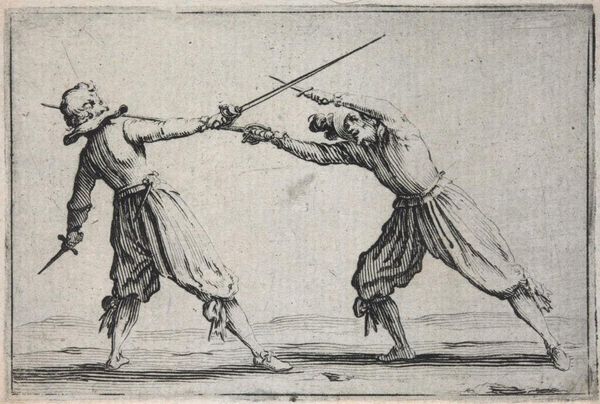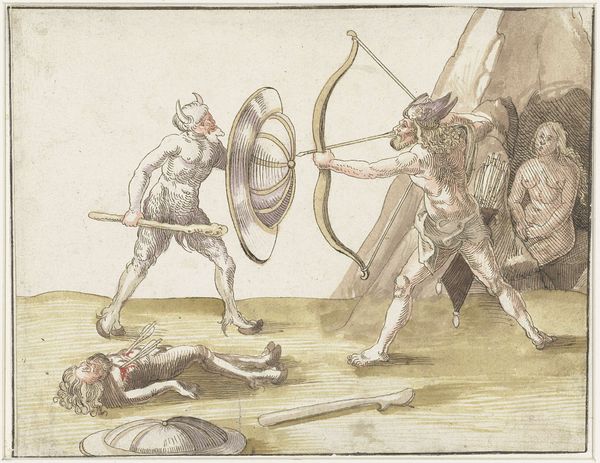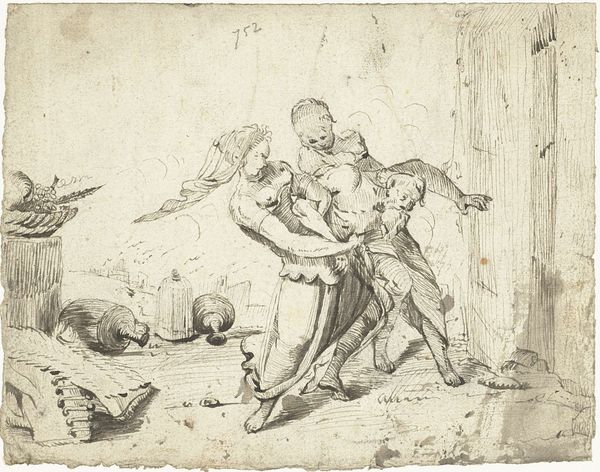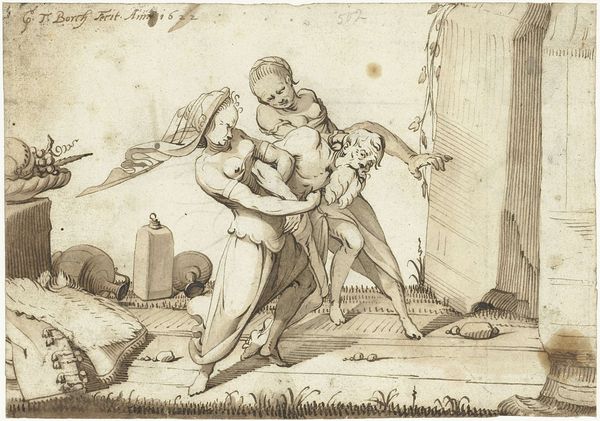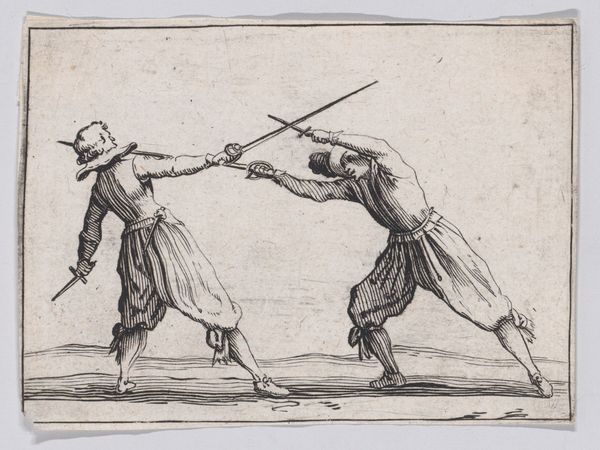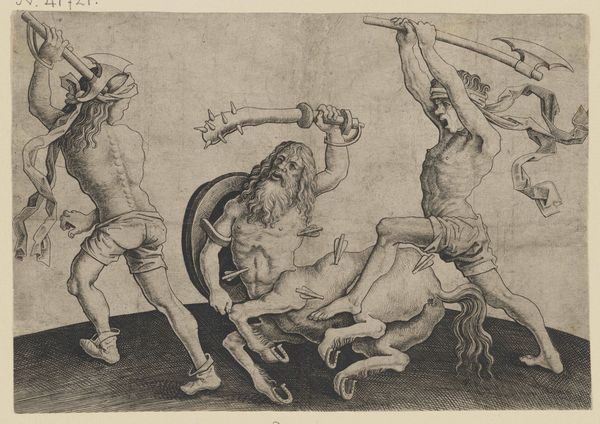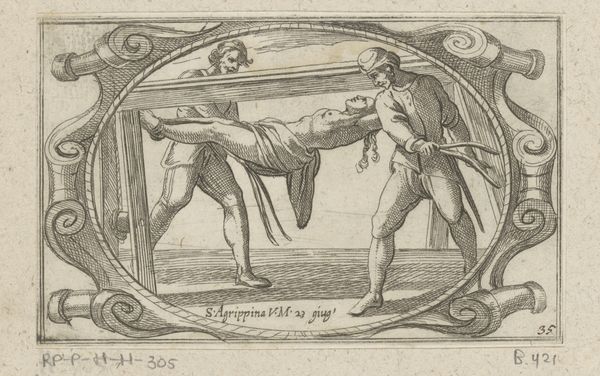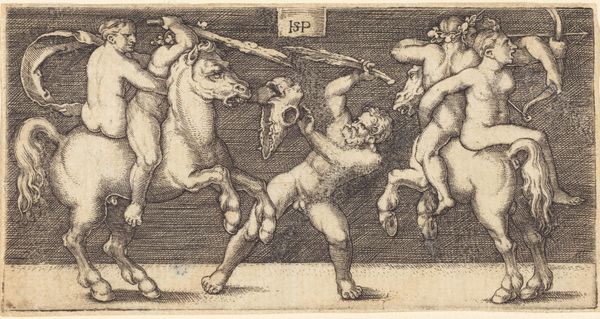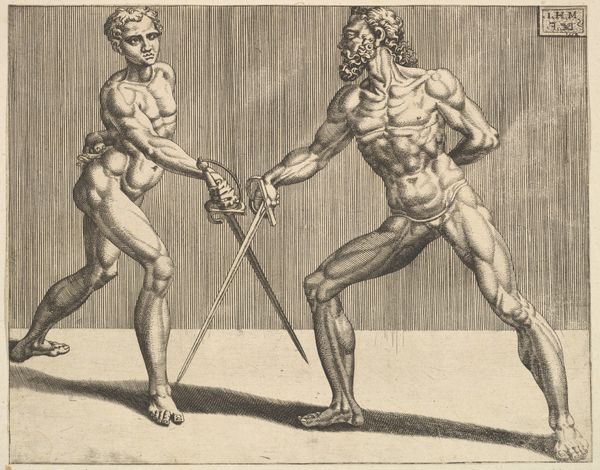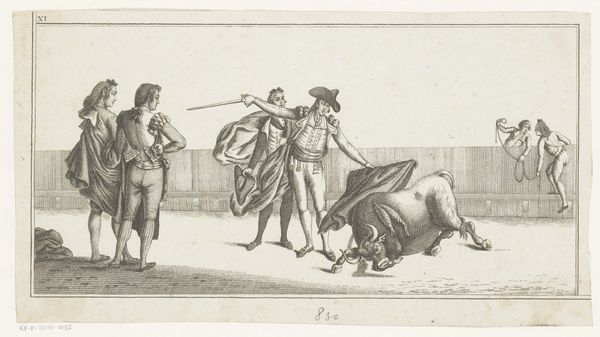
drawing, paper, ink
#
drawing
#
narrative-art
#
mannerism
#
figuration
#
paper
#
11_renaissance
#
ink
#
history-painting
Dimensions: height 153 mm, width 198 mm
Copyright: Rijks Museum: Open Domain
Editor: This ink drawing on paper is titled "Hercules, Deianeira and the Centaur Nessus," made by Gerard ter Borch the Elder around 1617-1619. It has a very dramatic feel—the figures are dynamic, caught in this intense moment. What catches your eye? Curator: Well, aren't we immediately plunged into the depths of a classic tragedy? There's Hercules, our muscular hero, poised with deadly aim. Think of him as raw power, mythological heft. But it’s the composition, that spiraling energy between the three figures, which whispers of mannerism, doesn’t it? Almost like a Baroque dance of death! The entire drawing becomes a visual poem of revenge. Editor: I see that now! What do you think Ter Borch wanted to communicate? Curator: That’s the million-dollar question, isn't it? Perhaps it is a reflection of morality? The centaur, a creature of lust and violence, pays the ultimate price for his transgression, whereas Hercules acts as the righteous punisher. Ter Borch's expert shading creates figures that leap off the page, but I keep wondering if he, too, pondered the nuances of their fate. It all seems a bit Shakespearean to me - complex and morally ambiguous, right? Editor: It's like a snapshot of chaos! So, it isn’t just a cool story, but also a kind of moral contemplation…fascinating. Thanks for pointing out those layers! Curator: Precisely! And in decoding that chaos, perhaps we discover echoes within ourselves, the eternal struggles between impulse and consequence…food for thought, eh?
Comments
No comments
Be the first to comment and join the conversation on the ultimate creative platform.
